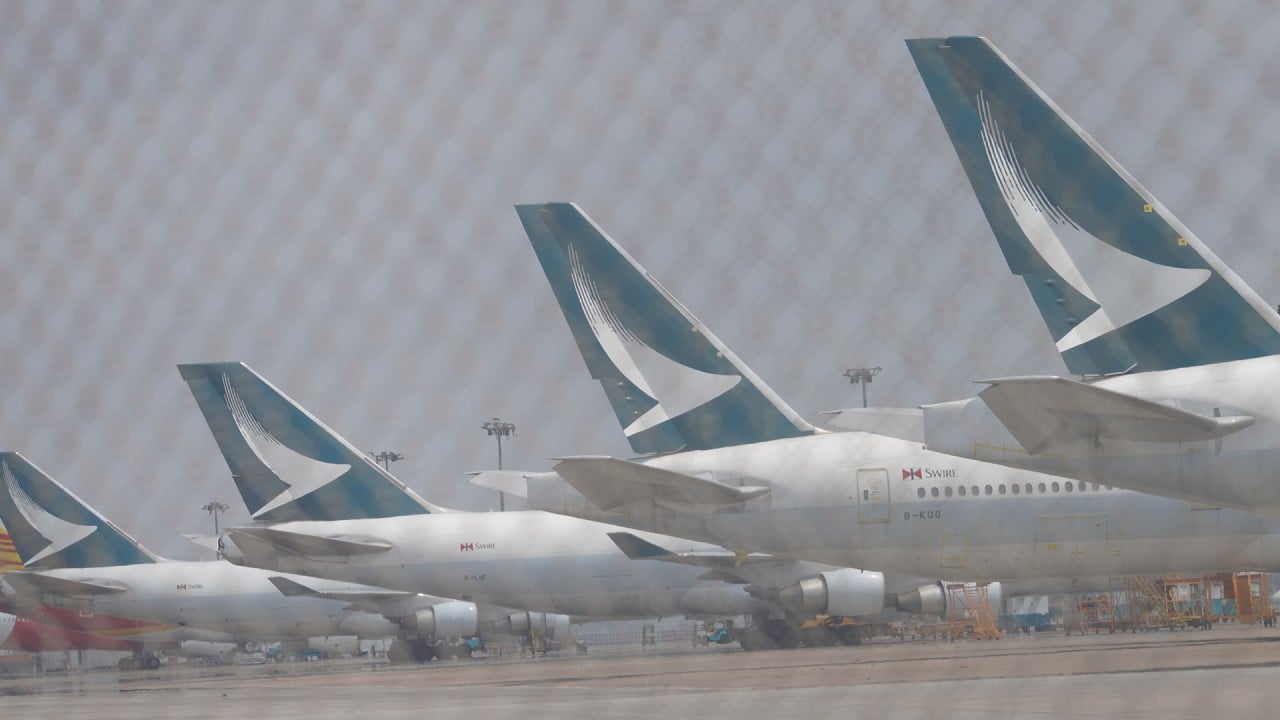Another text the next day announced her flight back to Dubai had also been scrapped. After she spent hours on the phone with Cathay in a bid to find an alternative that worked for her, Li gave up, obtained a refund and booked a ticket with Emirates instead.
“When everyone thinks of Cathay Pacific, they associate it with Hong Kong and … this ridiculous move has only put themselves into deeper water,” she said. “They have tarnished their reputation, and on top of that, they tarnish Hong Kong as a destination.”
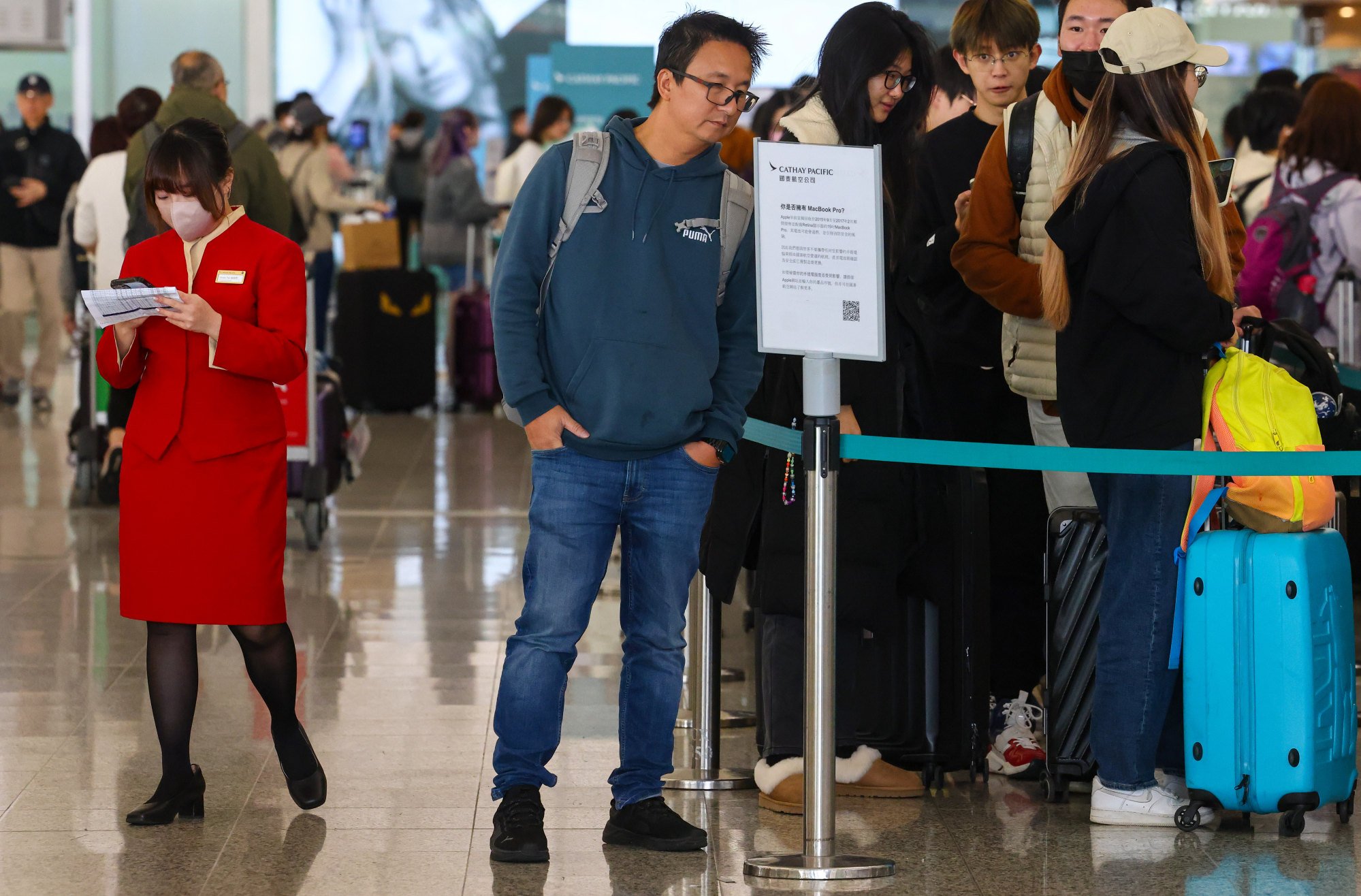
The government, which threw Cathay a HK$39 billion (US$5 billion) lifeline to keep the company afloat during the pandemic, expressed its concerns.
City leader John Lee Ka-chiu on Tuesday told the airline to overcome its challenges “very quickly and very effectively”.
“I want our aviation industry to rebuild its capacity fast and completely so that we will be competitive,” Lee said.
But analysts warned that might not be easy and cautioned that further cancellations could be announced during other peak travel periods as the airline struggled with a severe pilot shortage.
The carriers’ pilot union has laid the blame for the problems squarely at the feet of management. They highlighted lay-offs over the pandemic and called for a change in leadership.
They argued, to be competitive, the remuneration package for pilots must be improved to lure back Hong Kong licensed pilots and stem the flow of resignations.
Cathay rescue seen as win for both airline and Hong Kong
Cathay rescue seen as win for both airline and Hong Kong
How did we get here?
Cathay has cancelled more than 160 flights since Christmas Eve, most of them during the final week of December and in the first few days of January and blamed higher-than-anticipated pilot absences caused by seasonal illness.
But, in a memo sent to staff on December 30 and seen by the Post, the carrier also acknowledged that many pilots had reached or were close to hitting their limit of 900 flying hours during a rolling 12-month period, a cap adopted internationally from China to the European Union, and designed to ensure cockpit crews did not suffer from potentially dangerous fatigue.
In an apology to customers on Wednesday, chief operations and service delivery officer Alex McGowan admitted the company had “underestimated” the number of reserve pilots needed over the year-end period, which led to several flights being axed.
The cancellations over the first two weeks of January were necessary because the roster for this month had been set in mid-December, and the lack of adequate reserve levels had persisted, he said.
McGowan noted 27 flights were cancelled on January 7 but pledged the number had peaked.
“The disruption of this scale is far below the standard our customers have a right to expect, and far below the standard to which we hold ourselves,” he said. “I am leading a task force to ensure we identify and resolve the underlying issues.”
The airline has 2,532 pilots, about 35 per cent fewer than before the pandemic, according to the Hong Kong Aircrew Officers Association. But the number of captains and first officers flying passengers stood at just 52 per cent of 2019’s levels, it said.
In the association’s view, the root of Cathay’s current problems lies in a management decision in October 2020 to cut 5,900 jobs globally, close its regional airline and cut wages of frontline staff.
Remaining employees were offered cost-cutting contracts that slashed pilot pay by about 40 per cent, while housing and retirement benefits were also reduced. Hundreds of pilots resigned.
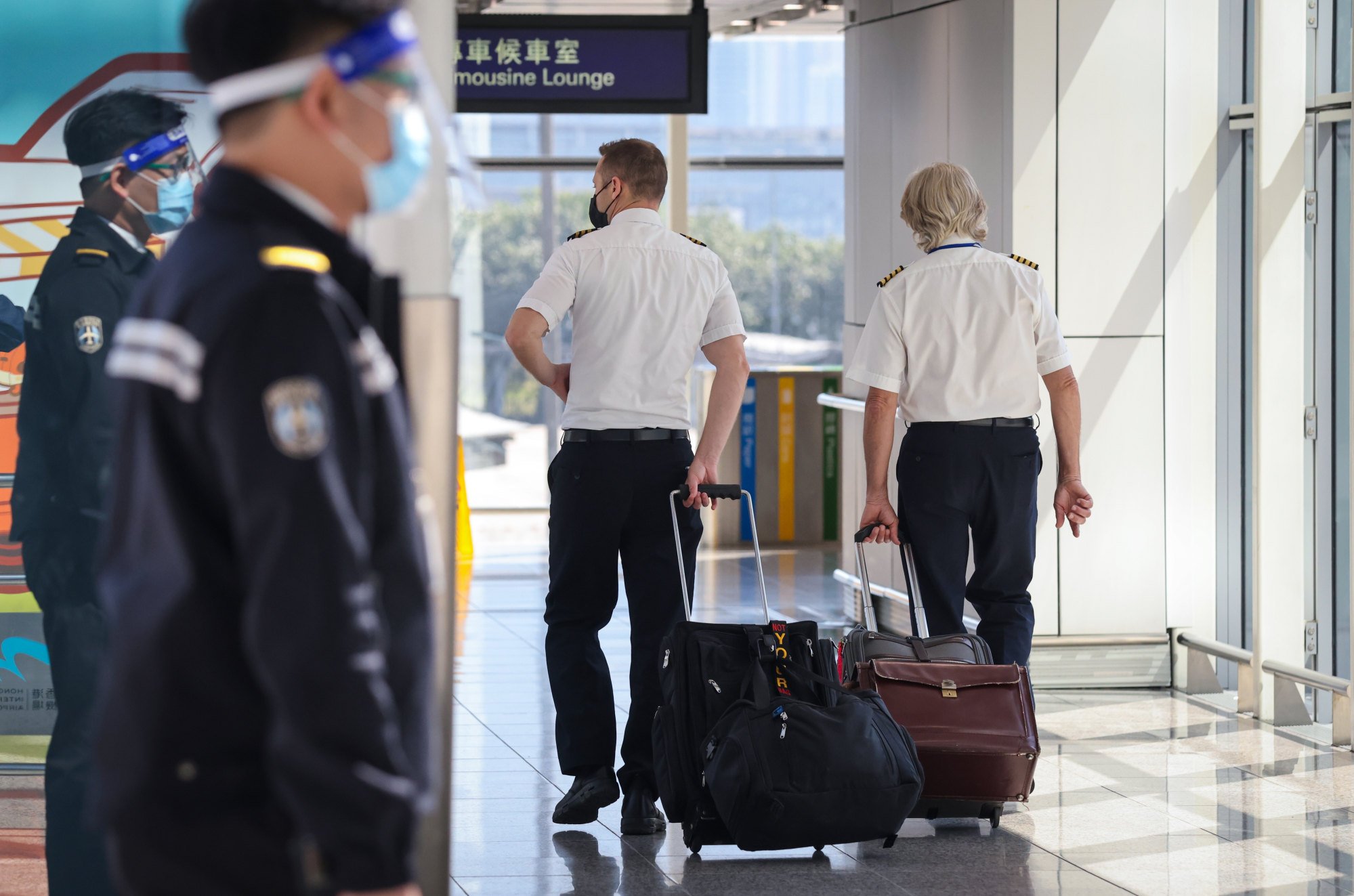
Association chairman Paul Weatherilt said pilots continued to quit and training new ones to replenish the ranks would take years. He warned rehiring hundreds of Hong Kong licensed pilots earlier let go would require management to improve its remuneration packages.
Cathay has repeatedly insisted it has met its rebuilding targets, noting the carrier and its HK Express budget arm were operating 70 per cent of the number of pre-pandemic flights as of the end of last year. The group is also seeking to fully restore passenger capacity by the end of 2024.
“We are on track with our comprehensive plan to recruit top talent to support our operations and drive our rebuilding efforts,” a spokesman said earlier.
Hong Kong’s Cathay Pacific expects first annual profit in 4 years
Hong Kong’s Cathay Pacific expects first annual profit in 4 years
Exhausted staff, chaotic rosters
Mark*, who has flown for Cathay for 15 years, said many of his peers were exhausted by the messy roster arrangements, which often involved last-minute changes.
For instance, he was once told that a short-haul afternoon flight had been cancelled only three hours before take-off and he was asked to handle an overnight one instead.
“I woke up at 9am on the assumption that I needed to operate the afternoon flight and had no plans to take any nap in the day,” he said. “How could I have sufficient time to prepare for a midnight flight with such a short notice? Not that I can fall asleep whenever I want to.”
Not only did the sudden scheduling changes breed anxiety in employees, but the switches could potentially lead to safety issues due to crew fatigue, he warned.
The 900-hour flying cap was a threshold to prevent fatigue, not a target, and any pilot who exceeded the limit would have to be rostered off for a month, Mark explained.
For pilots on the verge of hitting the cap, Cathay had asked them to fly to short-haul destinations such as Taipei and return as a passenger, a leg of the journey for which they received only a quarter of their normal hourly wage, he said.
Hong Kong’s Cathay tackles staff shortages, poor morale as it chases rivals
Hong Kong’s Cathay tackles staff shortages, poor morale as it chases rivals
Mark said he was once required to report to Cathay City, the company’s main offices near the airport, just after the period of a minimum 12 hours of rest between flights had expired for a departure scheduled in 10 minutes.
But he added, because of the various procedures for pilots, he could not make take-off on time and the flight was delayed by nearly half an hour.
Mark said Cathay was right to cancel and merge flights, but he blamed the airline for being too aggressive when planning its services and said it had ultimately jeopardised its reputation.
He warned that flight schedules might continue to change over the next few months as he expected more of his colleagues to quit.
Mark said Emirates had approached some of Cathay’s pilots through LinkedIn, as the Dubai-based carrier aggressively expanded its fleet.
“Local pilots might consider joining the airline, which offers the same pay as Cathay, but also covers education and housing allowances and they do not have to pay tax after moving there,” he warned.
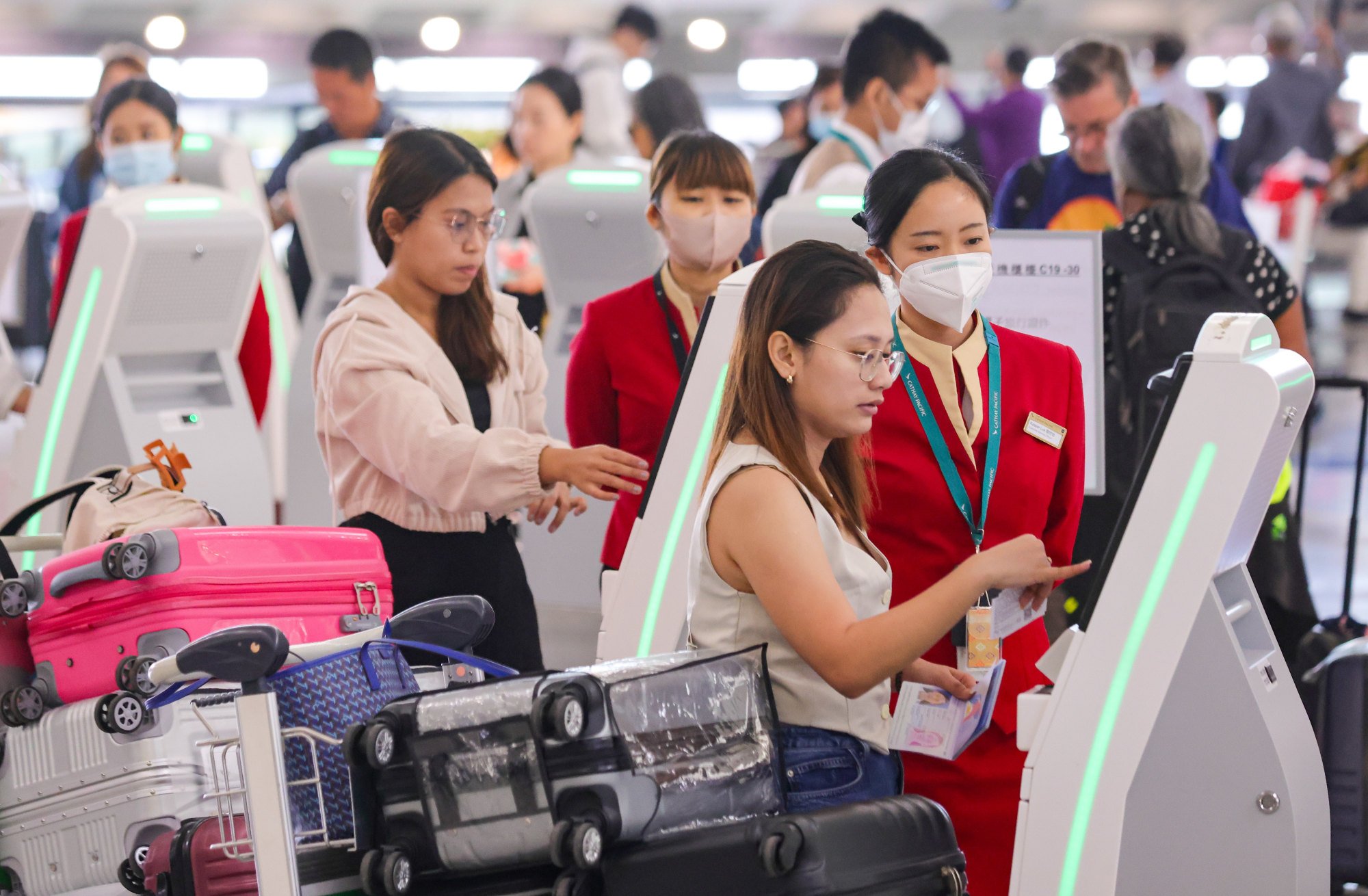
He added the only way out of the quagmire was to restore pilots’ previous contracts to keep and attract staff and for Cathay to stick to the roster drafts released to employees.
Thomas*, who has flown for Cathay for decades, said his work-life balance had been thrown into disarray, with the company giving him only the minimum number of days off each month.
He said employee illness was a concern, but the overriding problem was a shortage of pilots, with the ones on staff being close to or hitting the 900-hour limit, he said.
Thomas argued that management had gone too far with across-the-board measures to cut costs and then acted too late to address the staffing crisis while at the same time trying to keep coronavirus-era pay packages in place.
He added that airlines such as Emirates, Singapore Airlines and British Airways had restored salaries to at least pre-pandemic levels.
Morale would receive a big boost if the company ensured the roster was stable and the days-off request system was more transparent and based on seniority, he argued.
“Money is important, but lifestyle is more valuable right now,” he said. “The full-on and shambolic roster is causing everyone a lot of stress.”
‘Bumpy road ahead’
Cathay is on course to post its first annual profit since 2019, with second-half 2023 results expected to surpass the figures for the first six months. It reported a net profit of HK$4.26 billion for the first half of last year.
The airline has also increased pay by between 3 and 8 per cent for cabin crew who fly more and adjusted the pay mechanism for pilots.
It gave staff who had remained through the pandemic a bonus equal to up to six weeks’ salary last September and introduced a profit-sharing scheme for the financial years 2023 to 2025.
But Shukor Yusof, founder of aviation advisory firm Endau Analytics, said the relationship between employees and management was “broken”.
“Management has to reimagine the way that Cathay has to go forward in light of what has happened, because it’s going to happen again if they don’t do anything,” he warned. “If they want to compete again to be the best in Asia, like they were before, I think they need to spend more money and more importantly, I think, to engage with the pilots.”
Hong Kong needs 2 to 4 years to reclaim aviation hub title: Cathay pilots’ union
Hong Kong needs 2 to 4 years to reclaim aviation hub title: Cathay pilots’ union
Herman Tse, a senior aviation analyst at Ascend by Cirium, said Cathay’s spate of flight cancellations were the first significant disruptions to its service and stressed the carrier had gradually been increasing capacity.
Staffing limitations had been exposed over the holiday period when it sought to add more flights, and therefore needed more pilots and cabin crew, he added.
“From a planning perspective … [they] rely on the crew to do high [numbers of] working hours during the peak season, [and] you hope they will support that … You bear the risk without the spare crew,” he said.
Cathay would strive to keep its market share and so would seek to meet demand by adding flights, especially during peak seasons, Tse added.
“But of course, there’s still a challenge for them. It will still take time,” he said. “I believe it’s a bumpy journey for them.”
The airline plans to employ 4,000 staff from mainland China by the end of 2025, including more than 1,500 cabin crew. It said it also aimed to hire 5,000 people this year, and the group had already hired back 2,000 people.
Hong Kong’s Cathay queues up 600 mainlanders to compete for 300 cabin crew jobs
Hong Kong’s Cathay queues up 600 mainlanders to compete for 300 cabin crew jobs
But Yusof said it would take time to train those from the mainland up to the quality for which Cathay was known, one synonymous with “style and efficiency and class”.
London-based aviation consultant John Strickland pointed out that Cathay had revamped its operation relatively quickly from “incredible lows” when the airline was operating at just 2 per cent of its pre-pandemic passenger capacity.
He added airlines in Europe had run into similar manpower shortages in the summer of 2022, resulting in significant cancellations and delays, following a faster-than-expected recovery in air travel.
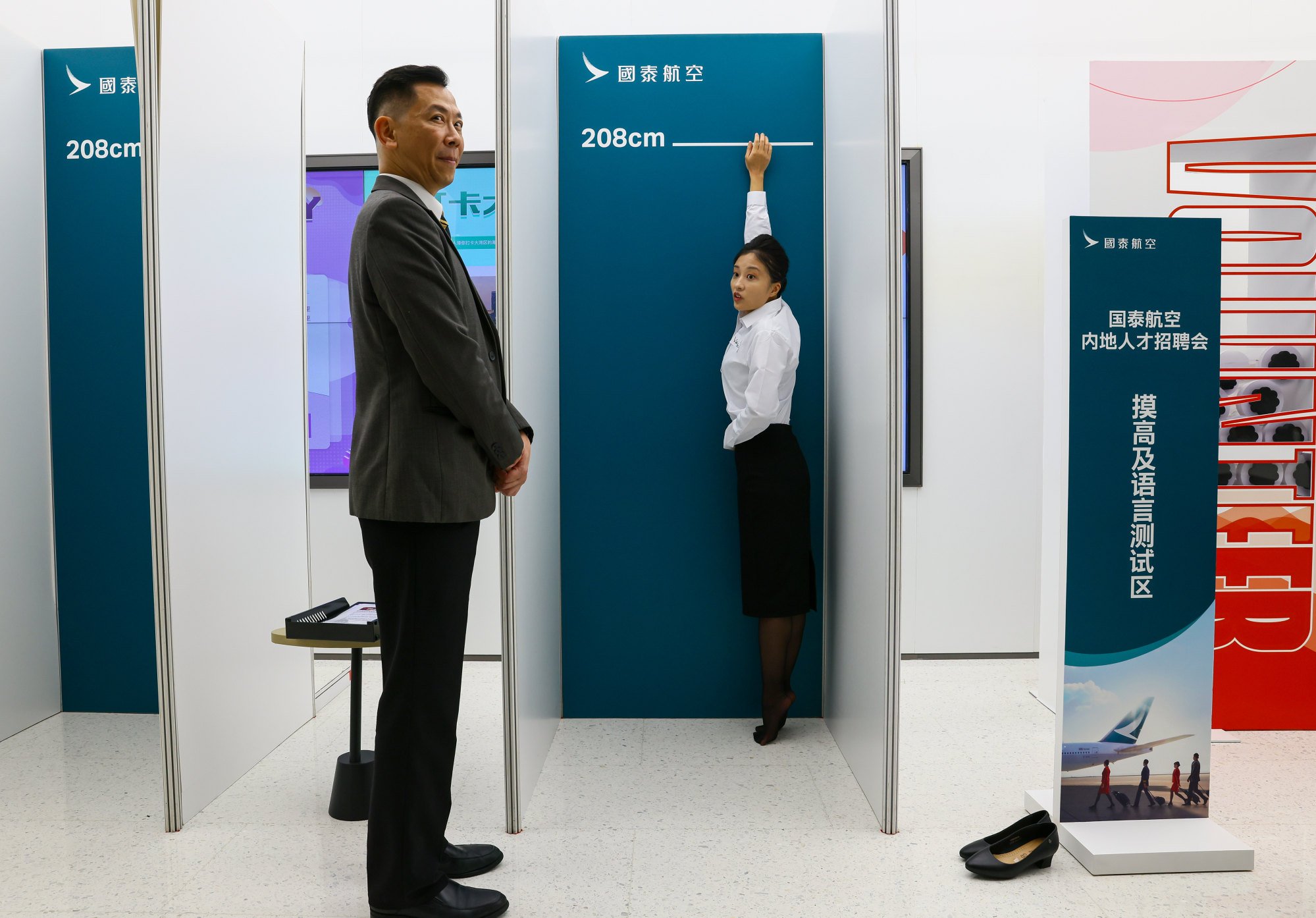
But the global shortage of pilots meant Cathay had to ensure it remained competitive in terms of salaries and contract conditions, he said, noting airlines in the United States had raised pilot salaries substantially.
Law Cheung-kwok, senior adviser for the Aviation Research and Policy Centre at the Chinese University of Hong Kong, said if Cathay was unable to supply the necessary number of flights during periods of high demand, such as at Easter, it might have to sell fewer tickets over the next major holiday period to avoid cancellations.
But he stressed the overall number of cancellations remained a small proportion of its total number of flights and the airline was still in a “transition period” as it rebuilt operations after the end of pandemic restrictions.
“Hopefully things will become much smoother and go back to more comfortable and satisfactory operation within this year,” Law said.
*Names changed at interviewees’ request
